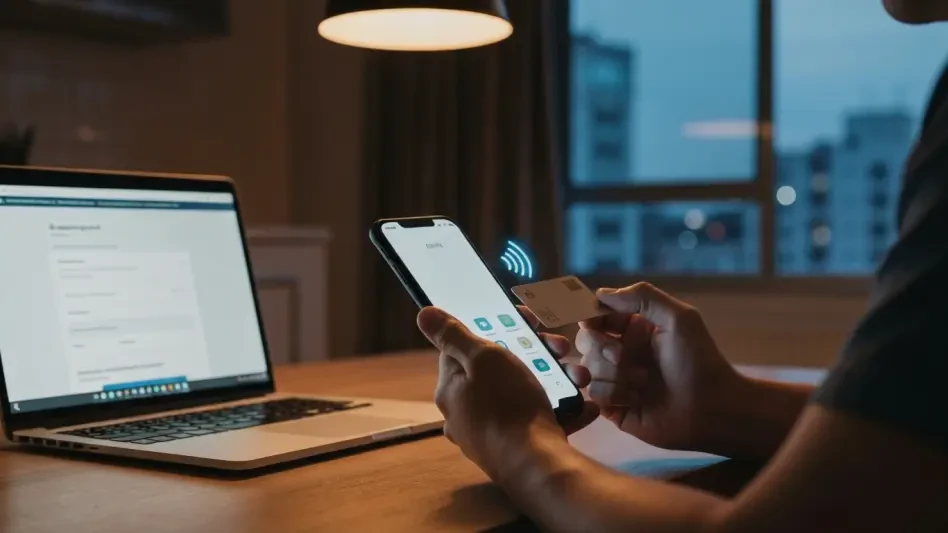In a digital landscape where mobile devices are integral to daily life, a new threat has emerged that preys on the trust of Android users across Europe with chilling precision. Dubbed DoubleTrouble, this banking trojan has rapidly evolved into a sophisticated malware strain, employing phishing tactics to steal sensitive information like banking credentials and personal data. Security researchers have uncovered its deceptive strategies, which range from mimicking legitimate platforms to exploiting system vulnerabilities for unauthorized access. This malware’s ability to adapt its distribution methods and bypass traditional defenses poses a significant challenge to cybersecurity. As cybercriminals refine their approaches, understanding the mechanisms behind such threats becomes crucial for safeguarding financial security and personal privacy. This article delves into the intricate workings of this malicious software, shedding light on its tactics and the urgent need for vigilance among users navigating an increasingly perilous online environment.
Unveiling the Threat’s Distribution Tactics
The rise of DoubleTrouble marks a troubling shift in how malware reaches its targets, moving beyond traditional phishing websites to more insidious channels. Initially spread through fake banking portals designed to trick users into revealing credentials, the malware has adapted to exploit platforms like Discord for direct distribution of malicious samples. Security experts have noted this pivot broadens the potential victim pool while making detection harder, as these channels often evade conventional security scans. By hosting droppers and payloads in seemingly innocuous online spaces, attackers capitalize on user trust in familiar platforms. This evolution in distribution underscores a growing trend where cybercriminals leverage social media and messaging services to disseminate threats, exploiting the casual nature of these environments to catch users off guard and infiltrate their devices with devastating efficiency.
Further examination reveals how DoubleTrouble employs cunning installation techniques to establish a foothold on Android devices. By exploiting Accessibility Services, it bypasses permission restrictions through session-based installations, often disguising itself as a legitimate Google Play extension. The malicious payload is cleverly hidden within the app’s Resources/raw directory, making it difficult for users to recognize the threat during installation. Once access is granted, the malware operates covertly, enabling data theft and device manipulation without raising suspicion. This method of deception highlights the importance of scrutinizing app permissions and sources, as seemingly harmless downloads can harbor sophisticated threats capable of compromising entire systems. Awareness of these tactics is vital for users to protect themselves from falling prey to such well-orchestrated attacks.
Advanced Mechanisms for Credential Theft
DoubleTrouble’s ability to steal credentials represents a significant leap in mobile malware sophistication, employing advanced tools to extract sensitive information. The latest variants utilize open-source libraries such as PatternLockView and PinLockView to create fake lock screens that capture PINs, patterns, and passwords with alarming accuracy. These stolen credentials are stored locally in SharedPreferences before being transmitted to a command-and-control (C2) server for exploitation. Additionally, the malware uses screen recording capabilities through Android’s MediaProjection and VirtualDisplay APIs, capturing real-time activities like entering one-time passwords or accessing cryptocurrency wallets. This data, converted into base64-encoded JPEGs within JSON payloads, effectively undermines multi-factor authentication, leaving users vulnerable to financial loss and identity theft in ways previously unimaginable.
Beyond basic data capture, DoubleTrouble employs a range of deceptive overlays and monitoring techniques to deepen its intrusion. It actively tracks foreground applications, blocking access to banking or security apps by displaying fake “System Maintenance Notice” screens that mislead users into inaction. Commands from the C2 server enable attackers to simulate touch gestures, inject HTML overlays, and deliver fake notifications that lure users to malicious URLs or apps. These tactics, combined with traditional phishing forms like “Account Verification” overlays on legitimate apps, create a multi-layered attack strategy. Such comprehensive control over infected devices illustrates the malware’s intent to not only steal data but also maintain persistent access, posing a prolonged threat to user security and necessitating robust defensive measures to counteract its pervasive reach.
Evasion and Control Through Sophisticated Commands
The complexity of DoubleTrouble extends to its extensive command set, orchestrated through a C2 server that grants attackers unprecedented control over compromised devices. Commands such as “block_app” and “unblock_app” allow interference with specific applications, while others simulate home or back button presses to manipulate user navigation. Protective mechanisms, including anti-analysis flags and misleading overlays like full black screens or fake update prompts, further obscure its malicious activities from detection tools. Obfuscation techniques, such as assigning nonsensical names to methods and classes, complicate static analysis and reverse engineering efforts by security professionals. This intricate design reflects a deliberate effort to evade scrutiny, ensuring the malware remains operational on infected devices for extended periods while harvesting valuable data.
Moreover, DoubleTrouble’s reliance on social engineering amplifies its effectiveness in maintaining control over victims. By pushing fake alerts and notifications, it tricks users into engaging with harmful content, often under the guise of urgent updates or verifications. Additional utilities enable real-time data retrieval and device manipulation, ensuring attackers can adapt their strategies based on user behavior. This persistent interference not only compromises immediate security but also sets the stage for future exploits, as blocked security apps prevent timely intervention. The malware’s ability to seamlessly integrate these evasion tactics with active control mechanisms underscores the growing challenge of combating mobile threats that exploit both technical vulnerabilities and human psychology in equal measure.
Strengthening Defenses Against Evolving Threats
Looking back, the emergence of DoubleTrouble served as a stark reminder of the relentless innovation within cybercrime, particularly in targeting Android users through sophisticated phishing tactics. Its advanced capabilities for credential theft, real-time monitoring, and device control, paired with robust evasion strategies, highlighted the vulnerabilities inherent in mobile ecosystems. Security experts had emphasized the malware’s exploitation of Accessibility Services and deceptive overlays as critical points of concern, urging a reevaluation of how permissions and app sources were managed. The persistent threat to financial security and personal data demanded a proactive stance from both users and institutions to address the gaps exploited by such malware.
Reflecting on those challenges, the path forward involved adopting comprehensive measures to mitigate similar risks. Regular software updates emerged as a fundamental step to patch vulnerabilities, alongside cautious interaction with unsolicited links or content on platforms like Discord. User education became paramount, equipping individuals to recognize social engineering tactics like fake lock screens or urgent notifications. Additionally, scrutinizing app permissions before installation offered a critical line of defense against covert threats. By fostering a culture of vigilance and leveraging advanced security tools, the digital community could better shield itself from the evolving landscape of mobile malware and safeguard against future financial and personal data breaches.








